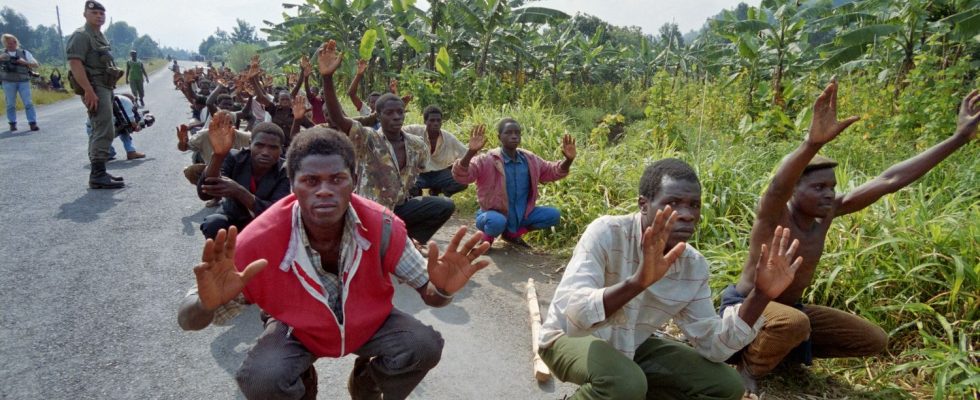The news put into perspective every Saturday, thanks to the historian Fabrice d’Almeida.
Published
Reading time: 5 min

This week, President Macron recorded a video for the commemoration of the Rwandan genocide, which will take place on Sunday April 7. Video in which he states that “France could have stopped the genocide” with her allies but that she “did not have the will”. An allusion to a story that began on April 6, 1994, in Kigali.
30 years ago to the day, in fact, the Rwandan presidential plane was preparing to land in Kigali after returning from a trip to Tanzania. On board, President Juvénal Habyarimana and the head of state of Burundi, Cyprien Ntaryamira. Also on board, a few ministers and the three French crew members. Suddenly, two missiles hit the aircraft, a Falcon 50, which crashed a few seconds later not far from the airport. It’s 8:22 p.m. None of the passengers survived.
From that time on, we wondered who carried out this attack. Rumors are circulating that it was white people, Belgians, who led the attack. Then we will say that they are French soldiers. We will even mention theses according to which South African or Israeli mercenaries may have acted. Still, on April 6, 1994, two presidents died and the news plunged Rwanda into a climate of unprecedented violence.
A few hours later, the start of the genocide
On the morning of the 7th, Prime Minister Agathe Uwilingiyimana was assassinated with her husband. Then the escort of Belgian peacekeepers comprising ten men was in turn massacred. The Prime Minister could have been a moderate alternative, while the Hutu extremists want to massacre the Tutsis and those who help them.
In fact, on the evening of the 6th, as soon as the death of President Habyarimana was announced, the Hutu extremist radio station, Radio Mille Collines, launched calls for the murder of Tutsi personalities and demanded a general massacre. The Rwandan army begins to carry out summary executions, notably the presidential guard.
The whole country plunges into horror. Men, women, children, all the Tutsis who were taken were killed without distinction, like certain Hutus considered close to them. We calculated the rate of executions: 447 deaths per hour. It is not a civil war as was said at the time, but rather a genocide: the coordinated and systematic massacre of a population because of its existence and not its actions.
Until July these crimes were carried out relentlessly. In total 800,000 deaths. Sometimes left as is in the villages where they were murdered, in open-air cemeteries. A genocide with stabbing murders, considered the last of the genocides of the 20th century, after the Namas and the Hereros, the Armenians, the Shoah, Cambodia…
The perpetrators of the attack still unknown
But even today, thirty years later, despite several legal proceedings, no one knows who was behind the attack of April 6, 1994. This event remains a mystery. Hutu extremists were accused of wanting to kill a president deemed too moderate. Then the Tutsi rebels of the RPF were responsible. And even more. This act which triggered a genocide has not revealed its culprits.
This is not what President Macron’s statement is about, but about the long months during which the killings took place. The world saw, knew, but did not intervene as it should have, the French president said today. A recognition which will perhaps help to advance the memory of this tragedy.
